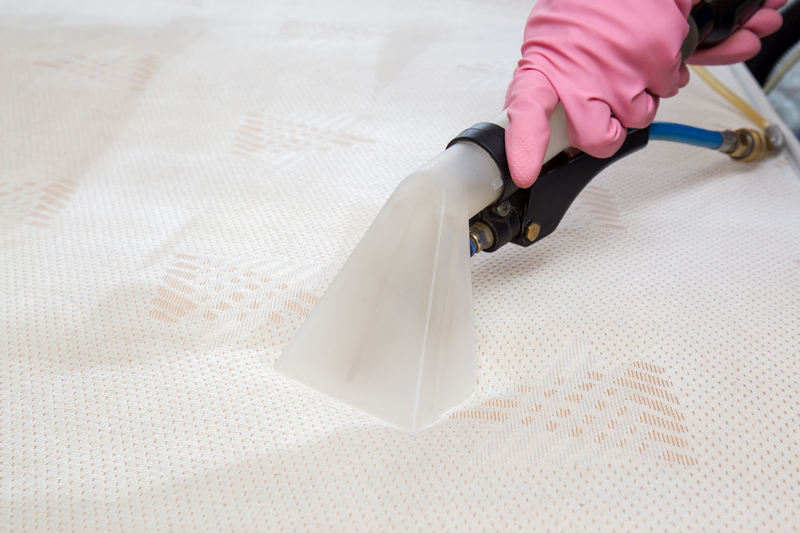Eliminate Unsightly Mould from Window Sills
Posted on 28/06/2025
Eliminate Unsightly Mould from Window Sills: A Comprehensive Guide
Have you noticed unattractive mould on your window sills? These dark, often fuzzy patches are not just an eyesore--they can also pose health risks and cause long-term damage to your home. In this in-depth article, we'll show you how to eliminate unsightly mould from window sills, prevent it from coming back, and keep your living space fresh and healthy. Whether you're dealing with black mould, mildew, or any other type, our step-by-step guide will help you restore your window sills to their former glory.

What Causes Mould Growth on Window Sills?
Mould forms on window sills when moisture and poor ventilation combine, creating the perfect environment for fungi to thrive. Common causes of mould on window frames and sills include:
- Condensation from humid indoor air meeting cold window glass
- Leaking or poorly sealed windows allowing water ingress
- Poor ventilation
- Lack of sunlight or warmth in certain rooms
- Unaddressed spills or water damage around the window area
When these conditions persist, mould spores settle and grow, quickly spreading across wooden, PVC, or aluminium window sills.
Risks of Leaving Mould Untreated
Leaving mould untreated on your window sills is more serious than just displeasing aesthetics. Here are some of the risks of ignoring unsightly window mould:
- Health issues: Mould spores can trigger allergies, asthma, skin irritations, and respiratory problems, especially in children and the elderly.
- Structural damage: Wood rot and paint degradation can weaken window frames, sills, and even walls.
- Unpleasant odours: Mould and mildew produce musty smells that cling to furnishings and fabrics.
- Reduced property value: Visible mould can lower your home's value and deter potential buyers.
Identifying Different Types of Window Sill Mould
Not all mould is created equal. Distinguishing between types can help you choose the best window mould removal strategies:
- Black mould (Stachybotrys chartarum): Known for being toxic and persistent, appearing as dark black spots or streaks.
- Green mould: Generally less hazardous but still unsightly and damaging.
- White mould: Appears powdery or fluffy, often mistaken for dust--yet just as destructive.
How to Eliminate Window Sill Mould Step by Step
Ready to regain your clean, healthy windows? Here's how to remove mould from window sills effectively and safely.
Essential Tools and Products for Mould Removal
- Protective gloves (rubber or latex)
- Face mask (preferably an N95 respirator)
- Eye protection
- Scrubbing brush or sponge
- Old towels or absorbent paper towels
- Spray bottle
- Bucket of warm water
- Cleaning solution (see below for recipes)
Best Cleaning Solutions for Window Sill Mould
You can use commercial mould remover or make your own safe, effective mixture at home:
- White vinegar solution: Mix equal parts vinegar and water in a spray bottle. Vinegar kills up to 82% of mould species. (Do not combine vinegar with bleach.)
- Baking soda paste: Mix 2 tablespoons of baking soda with water to form a thick paste for scrubbing stubborn spots.
- Hydrogen peroxide (3%): Pour into a spray bottle and use as is for tough mould. Test on a small area first to avoid discolouration on wood or paint.
- Bleach solution: Use a mix of 1 part bleach to 10 parts water. Note: Bleach can damage some paints and is best for non-porous surfaces like PVC or aluminium.
Step-by-Step Mould Removal Instructions
- Open windows or doors to ensure good ventilation during cleaning.
- Put on protective gear: gloves, face mask, and eye protection.
- Remove loose debris and dust with a dry towel, then discard it safely.
- Spray the cleaning solution generously onto the affected area. Let it sit for at least 10 minutes to break down mould spores and stains.
- Scrub the window sill gently with a brush or sponge, paying attention to crevices and corners where mould hides.
- Rinse the area with warm water and wipe clean with a fresh towel.
- Repeat if necessary for stubborn spots, switching to a stronger cleaner if needed.
- Dry thoroughly with towels and keep the window open to allow moisture to escape.
- Dispose of all cleaning materials in a sealed bag to prevent spreading mould spores back into the room.
Natural Ways to Remove Window Sill Mould
For eco-friendly mould removal, try these effective natural options:
- Tea tree oil: Add 1 teaspoon of tea tree oil to 2 cups of water in a spray bottle and spray directly on the mould. Let it sit, then wipe clean.
- Lemon juice: Citric acid has antifungal properties. Apply lemon juice straight or diluted as a final rinse for a fresh scent.
Preventing Mould from Returning to Your Window Sills
Once you eliminate mould from your window sills, following prevention tactics will keep them clean longer:
- Reduce humidity with regular ventilation--open windows, use extractor fans, or invest in a dehumidifier.
- Repair leaks promptly around windows, sills, or frames to prevent moisture build-up.
- Wipe condensation daily from glass and sills, especially during winter months.
- Insulate window frames to keep warm air in and cold, damp air out.
- Trim nearby foliage outside the window to allow sunlight and airflow. Sunlight naturally inhibits mould growth.
- Regular checks: Inspect your window sills monthly for any dark or fuzzy spots. Early intervention prevents mould from spreading.
Best Practices for Keeping Window Sills Mould-Free
Make the following habits part of your household routine to keep window sills free from mould:
- Clean window sills often: Use a mild cleaner and dry immediately after cleaning.
- Don't block air flow: Avoid placing furniture or heavy curtains tightly against windows, which can trap moisture.
- Consider anti-mould paints or sealants: After a thorough clean, you may want to repaint your sills with a mould-resistant product.
Frequently Asked Questions about Window Sill Mould
Can I use bleach to clean mould from wooden window sills?
Bleach is generally not recommended for wood, as it doesn't penetrate porous surfaces deeply and may damage the finish. For wooden window sills, stick to diluted vinegar, baking soda, or targeted fungicidal solutions.
Is window mould harmful to health?
Yes. Inhaled indoor mould can irritate the eyes, nose, throat, and lungs. It's particularly dangerous for those with allergies, asthma, or weakened immune systems. Take precautions when cleaning and consult a healthcare professional if symptoms worsen.
How do I know if I need a professional to remove window mould?
If the mould covers a large area (more than a square metre), if it keeps coming back after cleaning, or if you suspect black mould, it's safest to call a professional. They have specialised equipment and protective gear for complete and safe remediation.
How can I stop condensation on my windows?
To reduce condensation, try:
- Using extractor fans in kitchens and bathrooms
- Opening windows regularly for air circulation
- Keeping the room temperature consistent
- Using a dehumidifier if necessary
When Should I Replace the Window Sill?
If your window sill has started to rot, warp, or crumble due to advanced mould or water damage, cleaning may no longer suffice. You'll need to replace the sill when:
- There's soft, spongy wood or structural instability
- The paint won't adhere after cleaning
- Large sections are blackened or permanently stained

Conclusion: Say Goodbye to Unsightly Window Mould
Mouldy window sills are a common nuisance, but with the right approach, you can restore your windows to a sparkling clean state. Prompt action, safe and thorough cleaning, and long-term prevention are your best defences. Now that you know how to eliminate unsightly mould from window sills, enjoy a fresher, healthier, and better-looking home!
Remember: Consistent care makes all the difference. Include these window mould removal and prevention steps in your regular home maintenance for a permanent solution!
More Resources on Mould Removal
- CDC: Frequently Asked Questions about Mould
- EPA: Mould Clean-Up in Your Home
- NHS: Damp and Mould Health Risks
Start today--eliminate unsightly mould from your window sills and breathe easy at home!



